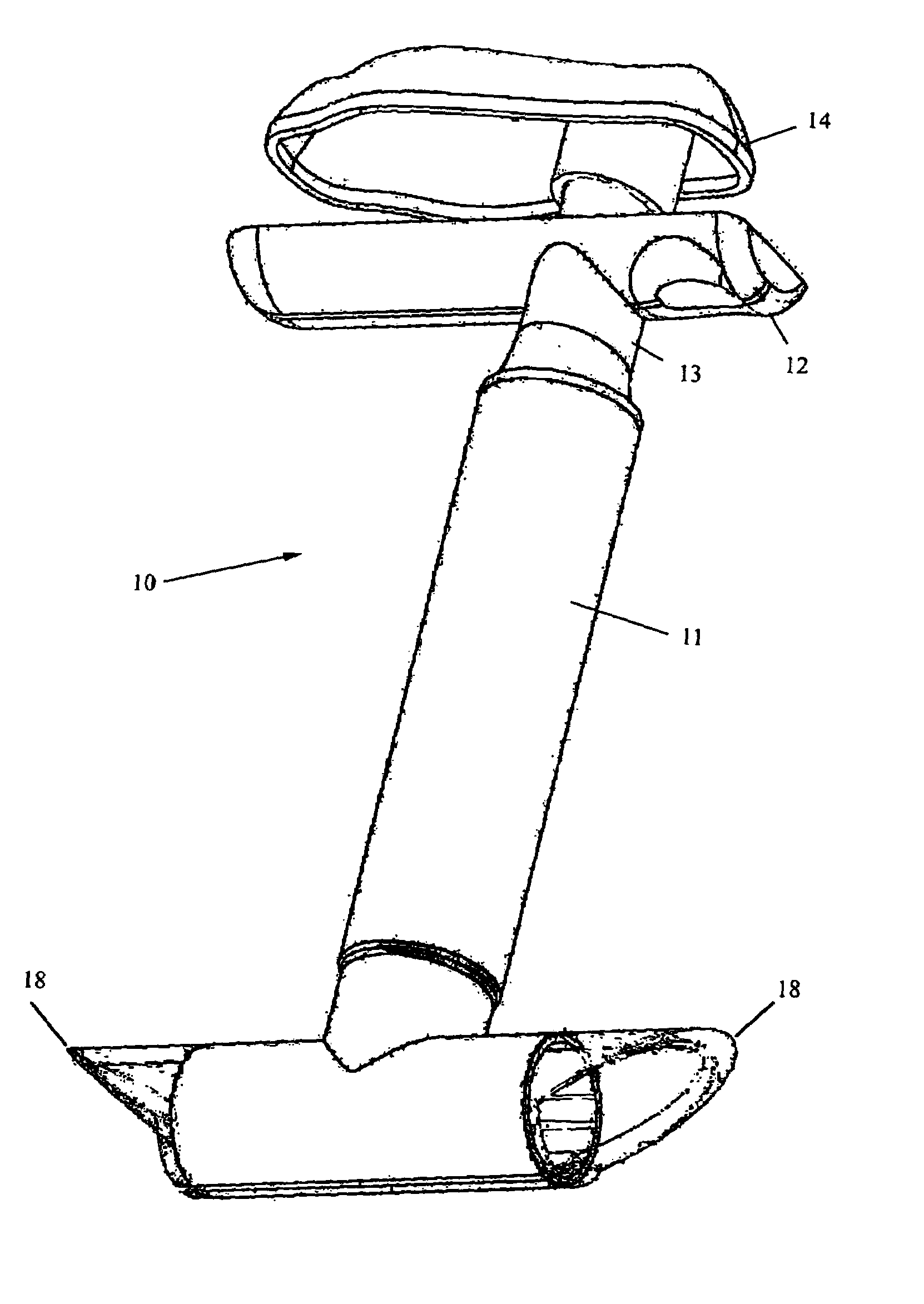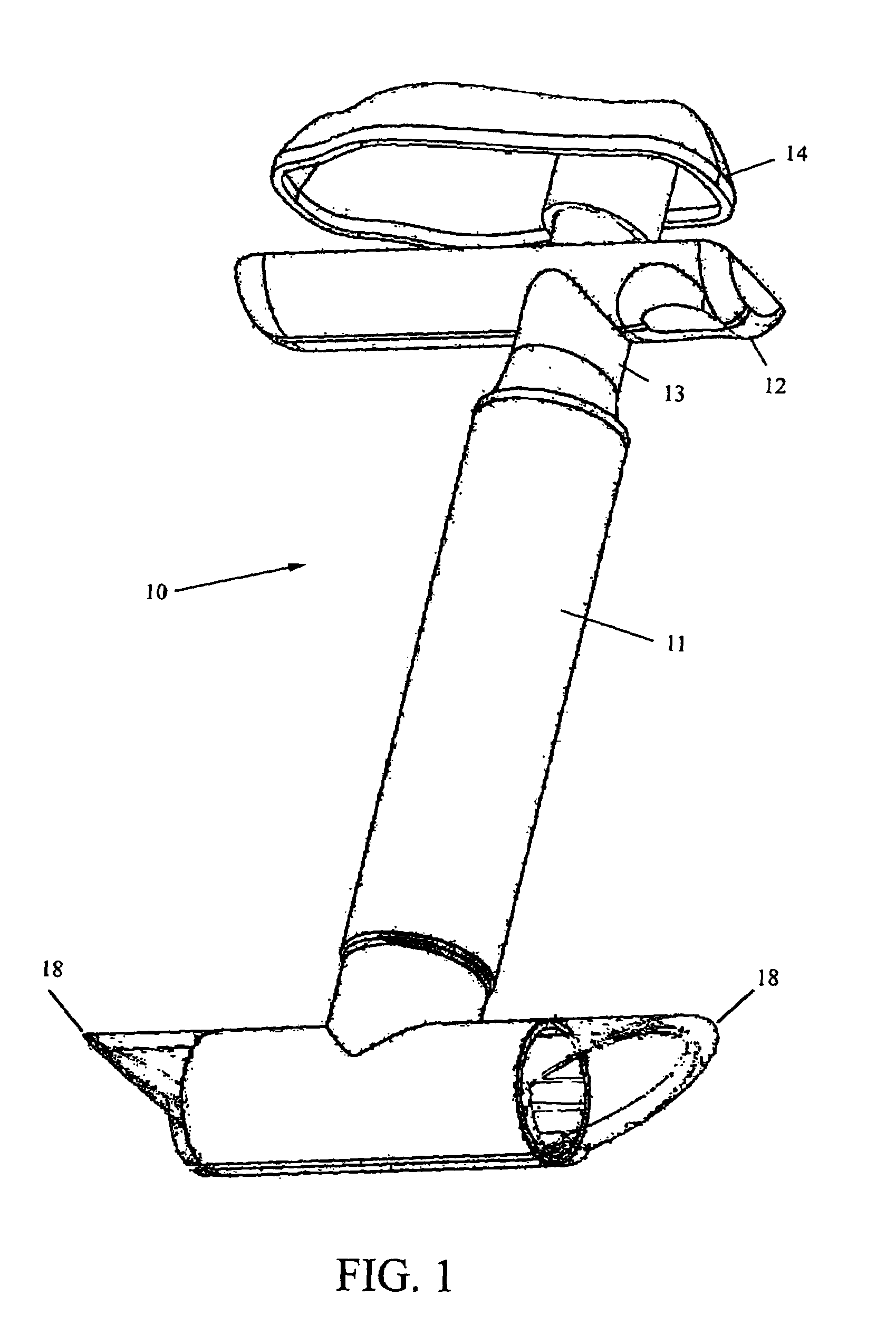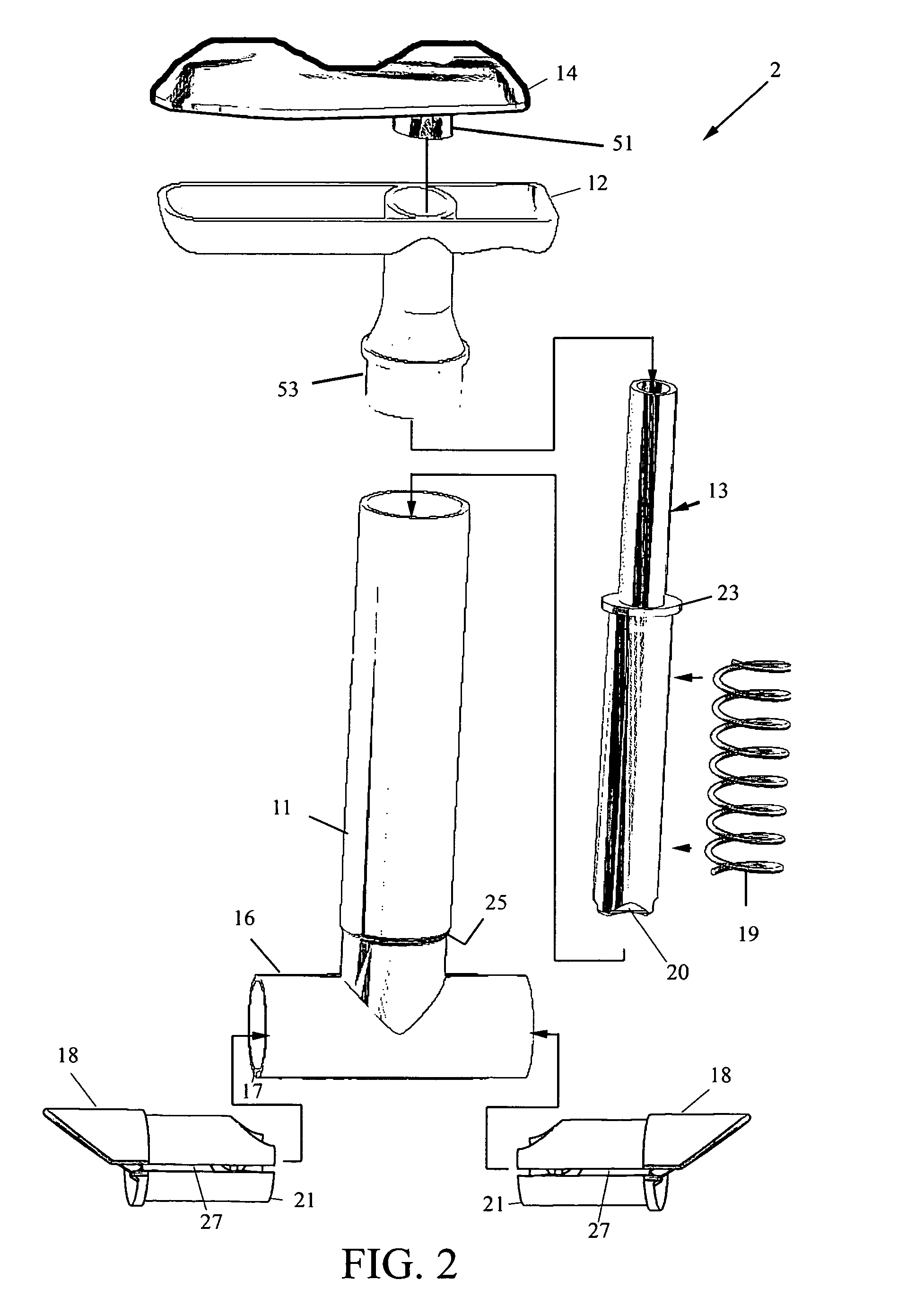Live eel bait hooking device
a bait hooking and live eel technology, applied in the field of fish accessories, can solve the problems of eel being notoriously difficult to handle, difficult to retrieve an eel from a bait container by hand, placing, slime all over, etc., and achieve the effect of quick, easy, and clean
- Summary
- Abstract
- Description
- Claims
- Application Information
AI Technical Summary
Benefits of technology
Problems solved by technology
Method used
Image
Examples
Embodiment Construction
[0022]The present invention is a live eel bait hooking device to simplify the handing of live eels when hooking them. Two embodiments are illustrated herein, including a portable hand-operated version 10 and a stationery boat-mounted version 30.
[0023]FIGS. 1 and 2 are front and sectional views respectively, of the portable hand-operated eel hooking device 10 according to the present invention. The hand-operated version generally comprising a cylindrical body 11, a transverse stationery handle 12 attached to the cylindrical body 11 and having an aperture for passing a plunger shaft 13 inserted into the aperture of the stationery handle 12 and down through the cylindrical body 11, and a movable T-handle 14 mounted atop the plunger shaft 13. This T-handle trigger configuration allows a user to hold the hand-operated eel hooking device 10 in one hand and compress the movable handle 14 toward the stationery handle 12 (in the manner of a syringe), thereby urging the plunger shaft 13 down ...
PUM
 Login to View More
Login to View More Abstract
Description
Claims
Application Information
 Login to View More
Login to View More - R&D
- Intellectual Property
- Life Sciences
- Materials
- Tech Scout
- Unparalleled Data Quality
- Higher Quality Content
- 60% Fewer Hallucinations
Browse by: Latest US Patents, China's latest patents, Technical Efficacy Thesaurus, Application Domain, Technology Topic, Popular Technical Reports.
© 2025 PatSnap. All rights reserved.Legal|Privacy policy|Modern Slavery Act Transparency Statement|Sitemap|About US| Contact US: help@patsnap.com



